Chris’ Grandmother, Millie, was a tiny precious woman that I met when she was already quite advanced in age. She was always kind to me, and I liked her very much. I think she liked me, too, as I provided her, at 90 years old, with her first great-grandchild. She met Ali just a couple of times before she passed away 15 years ago. One of my favorite pictures is from her 90th birthday, the first time she got to meet Ali.
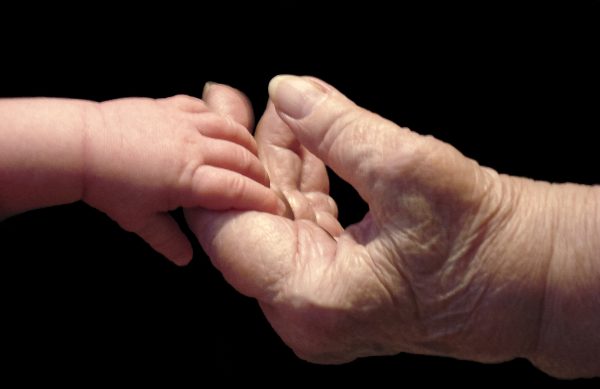
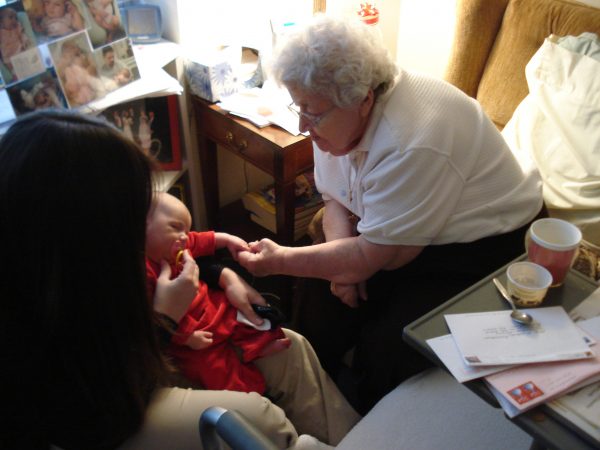
I heard a couple of stories here and there about Millie’s early years, and particularly the incredibly romantic and farfetched way she’d met her husband Roy, Chris’ granddad, but my true knowledge of who Millie was – before she was the old lady I knew – was fairly limited.
Until three summers ago, when Chris’ Aunt Kitty gave me Millie’s diaries.
Kitty and I had just spent three days and nights giving end-of-life care to Uncle Leo. We were looking for anything to distract us from our thoughts, our sadness, our trauma, and our lack of sleep.
She handed me the diaries, two five-year journals spanning the years 1937-1946, and said that her mother had given them to her before she had died, and upon giving them to her, Millie had said “I hope you don’t hate me when you read these.”
Kitty was confused by the sentiment and did read them, but didn’t understand why her mother would say that. Sure, her mom had a LOT of boyfriends, but she figured that would be true. But when Kitty read them, she read the diaries down the page – January 1, 1937, January 1, 1938, January 1, 1939, January 1, 1940, January 1, 1941, then on to January 2. So instead of reading them in a narrative, following all of the various storylines, Kitty read them more as standalone diary entries.
As I began reading them in chronological order, I realized that I was the first person in history to read this document, aside from the woman who wrote it. I quickly realized how incredible it was. It was an epic journey through a decade in the life of an independent woman well ahead of her time. There were so many stories hidden inside, so many questions that would stay unanswered, and SO MANY delightful mysteries and people for me to stalk down and learn about.
The diaries begin in 1937 when Millie is 20 years old and living in a boarding house in Minnesota – she had left home at 15, escaping a tiny farm in far north Minnesota where her parents never quite got along.
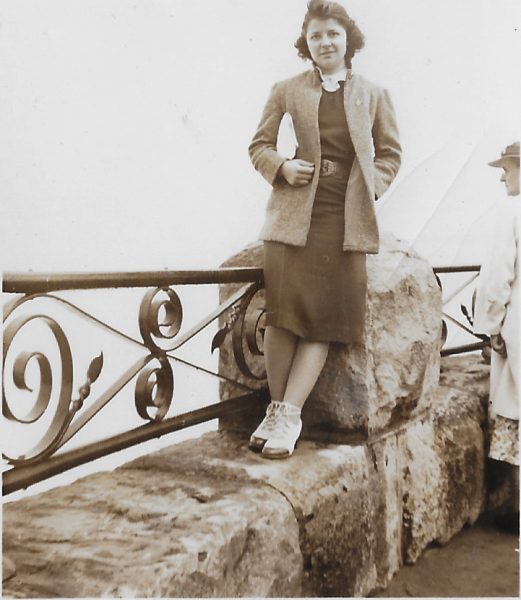
The narrative follows her as she moves to Washington DC to be near a boy that she knew from Minnesota, sings in the choir of President Roosevelt’s Church, and in general lives a life in DC that could never happen in present day.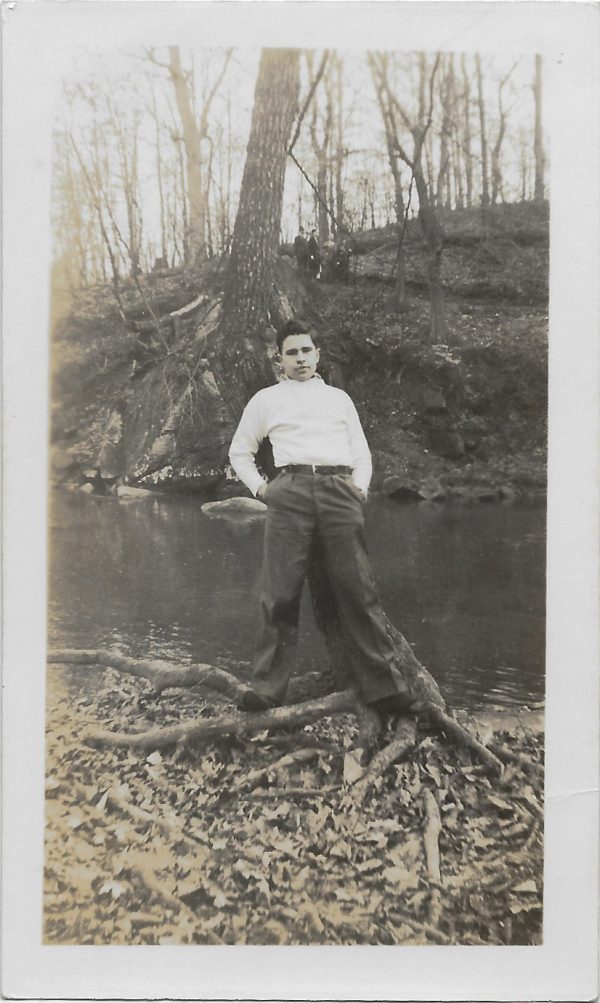
The original boyfriend, Bill Souder, photographed by Millie in 1938. He was nearly two years younger than her, so he was still a teenager when she moved from Minnesota to DC to be able to date him.

“Lovely day. President Roosevelt was at church. First time I have seen him. Went to Y.W. Fellowship meeting.”

“Still cold. Gordon called. Later a bunch of 13 of us from the house went to the President’s Birthday Ball at the Mayflower. Saw 14 movie stars. All very interesting, but what a mob of people! Kay Kayser played. Strange – but I was lonely even among all these people.”
She has a few more boyfriends (several overlapping) and records the drama along with it, all while including sidebar comments about her worries about the war in Europe.

“Germany has invaded Poland!! This awful business of war seems to be here. Called up Stenotype school about fall classes. Washed my summer dresses.”
(…because one must still wash their summer dresses, even if war has arrived.)

One of the more dramatic boyfriends, Ruh. Are those sandals that all our Grandmothers wore when we were kids? Did they get them from their old boyfriends? Were those sandals the hoodies of the thirties?
In 1941, Millie moved across the country from DC to Portland, Oregon to escape the above boyfriend (for different reasons than she had told all of us – a fascinating drama that I had to read between the lines and research to understand – and that may be one of the reasons she feared Kitty’s judgement.) The war came to her, as she records amidst her daily doings Japan declaring war on the US, the bombing of the west coast, and the requirements of blackouts in Portland and the fear of more bombings to come. More boyfriends and an engagement (which was quickly broken off) follow. She finds out about The Bolton Act in July of 1943, which offers to pay for nursing school for women agreeing to join the war, and in two months, she moves from Portland back to Minnesota to begin school.
On the train between Portland and Minneapolis, she meets a soldier named Roy Callahan from Birmingham, Alabama who was traveling between army bases.

“Rode all through Montana all day. Had a most enjoyable time on the train. Met Roy Callahan from Camp Adair. His home is Birmingham, Ala. but he was going to Columbus, Ga.”
Roy and Millie have two days on the train together, then she goes on to the University of Minneapolis, and he goes to Columbus Georgia, and then eventually to the European Front.
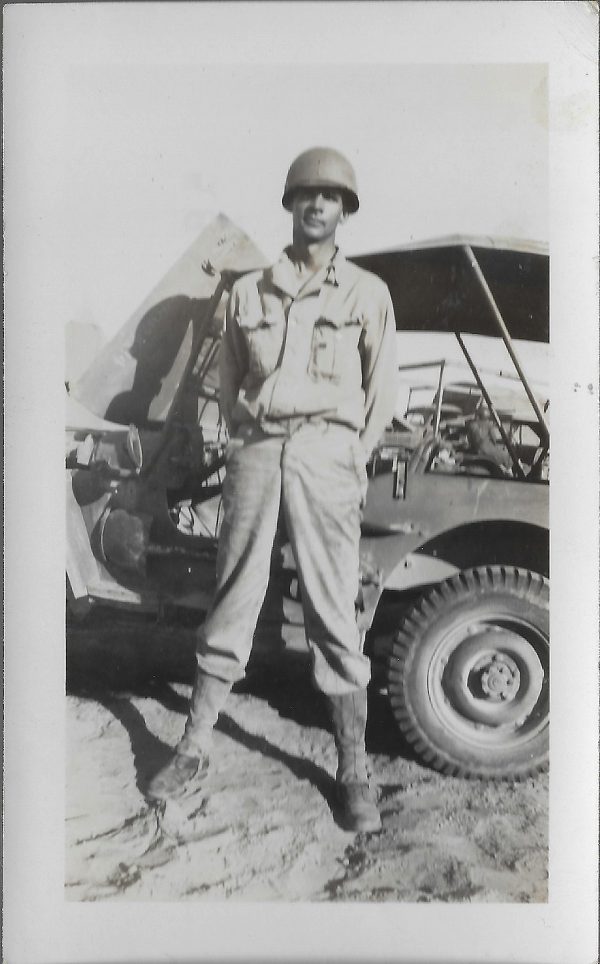
Within ten days of exchanging letters, they are declaring their intense love for each other. For the next one and a half years, they correspond, seeing each other briefly at various intervals, having many declarations of love, “graphic letters”, and nasty fights in the interim.
Roy came back from the war in 1945, and she assumed that meant they were getting married right away. But when she visited him and his family in Birmingham, Alabama, having already bought and brought her “wedding things”, she found him in a state of extreme “nervousness” from the war – he was not ready to be a husband. Nearly another year passes of ups and downs, fights and pleadings and so very much drama before they finally marry – but after the honeymoon, he makes her go back to Minneapolis and finish her nursing degree before she can finally move to Birmingham with him. The diaries end two months after she begins her life as a married newly-southerner.
The absolute improbability of her meeting and marrying that man, who she would have never met if she hadn’t been on the right train at the right time, astounds me. It seems to me that many of us had multiple opportunities to meet our spouses – we grew up in the same city, went to the same church or school, or ran in the same circles. But Millie and Roy had that one train ride – sitting in the same train car – hundreds or thousands of miles from where either of them originated. Other than that, they would have never crossed paths. The fact that my husband and my children exist rest entirely on Millie making that specific travel decision and being in that specific train car, besides the need for her not to marry one of the many men before him (including not one, but TWO other Roys – she had so many boyfriends that I had to create a spreadsheet to keep up with them.) The entire time I read the diaries, I sensed my husband, and therefore my children, fading like a photograph in Back to the Future.
Besides the diaries themselves, she left photographs, many of which she faithfully documented on the back the dates and people’s names and circumstances surrounding them. She also left documents that corroborate different parts of her story and give a fantastic flair of the 30s and 40s to the story, such as her including her height and weight on her resume.

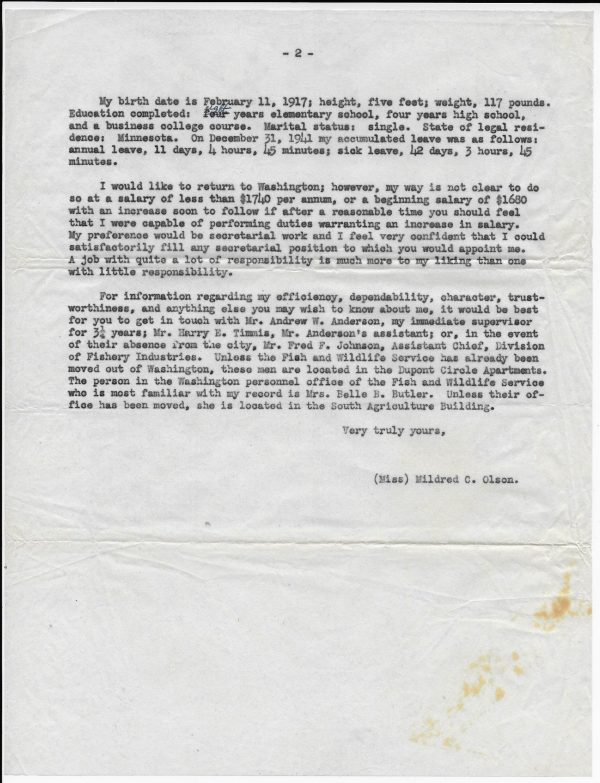
I read the diaries for the first time three years ago and was immediately drawn into the arc of the story, as well as the mundane parts of her life. I was left to ponder things such as the poor quality of shoes in the 1940s, causing young women to have to get corns “excavated” from their feet with regularity; and the difference between hosiery that one had to mend constantly and the new and exciting nylons that were expensive and easy to melt on the stove.
I was also intrigued by the overarching view of her life – taking in a year of her life in an hour of reading, I was able to see how she changed her personality over time and with various boyfriends. There was the opera and theatre boyfriend, the hiking boyfriend (whom I believe is responsible for her lifelong love of nature and being a founding member of Ruffner Mountain Nature Preserve here in Birmingham), and the worst most horrible boyfriend who used her for compassion and mercy (and paying his car payment) while he was cheating on her. When reading about him, I found myself screaming at the diary how much I hated him, wondering why I could see so clearly (from her own words!) what she could not see for many more months of mistreatment at his hand. I feel like I know all of these men intimately, have totally stalked them on Ancestry and found a few of their living relatives, and have also found documents, articles, and histories about them as well.
Last year, I typed the diaries in their entirety (with some assistance from Ali) for the family and a few friends to read. While doing so, I also inserted the photographs and documents into the story, as well as adding newspaper articles, historical images from Library of Congress and other sources, and Ancestry research on her many boyfriends. It was an overwhelming project, but it was an intensely beautiful way to dive deeper into her story and get to know her and all of the various characters better. Figuring out exactly where one of her photographs fit into the diary gave me that exultant feeling of fitting a hard-searched-for puzzle piece in its exact place. It’s an extremely large project – just over 100,000 words – but the short snippet of each diary entry makes it easy to read “just one more month” without getting overwhelmed.
When Chris read it, it was like discovering an entirely different person. He knew his grandmother as an old, sweet, grandmotherly woman who took him to Toys R’ Us and served him cantaloupe that he never ate.
We have talked about the potential for publishing Millie’s diaries, and are open to the idea. They would most likely have to be somewhat abridged, although I have had trouble doing so myself because so many of the entries have place, movie, book, or other historical references in them that I personally find interesting.
“Talked to Betty for a brief minute. Finished “Gone With the Wind”. It’s odd how I love all the others and pity Ashley. And I do hope Scarlett and Rhett find happiness. How hard it is to love and not be loved in turn. Melanie was truly “A very Great Woman” as Rhett said.”
The document needs to be both shortened and lengthened, taking the repetitive entries out, and fleshing out parts of the story that we know, but perhaps she didn’t at the time of writing. I’ve taken a year break from the project because of various life distractions and due to the fact that I’m not sure where to go from here – I found the story fascinating, as did some of my friends, but would strangers find it so interesting? I also realize it needs an editor, and an outside opinion. I’ve considered sharing it (or parts of it) on the blog, but I love it as a standalone epic so much that I don’t want to break it up.

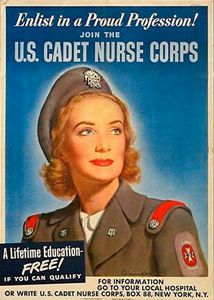
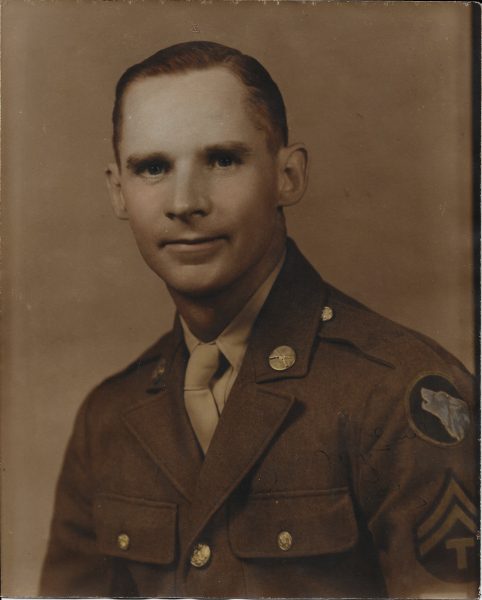

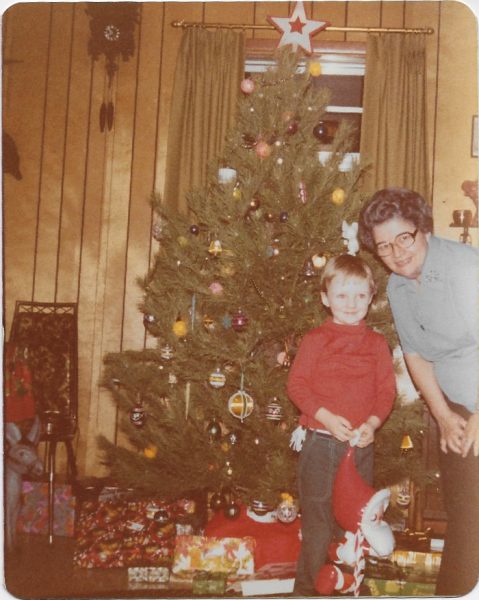
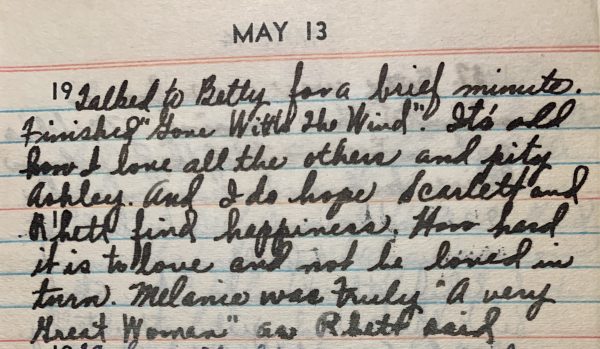
I would love to read a book like this. Our family has a 5 year diary of one of my grandfather’s sisters. In it she talks about her teaching job and going to dances. She was always the fun aunt in my opinion. She had been married at one time but didn’t have a husband when I knew her (I think he passed away). She never had children and lived in an apartment in Los Angeles. She retired from Greyhound and would come to visit us at least once a year here in Las Vegas. Whenever there was a family wedding or reunion she was always on the dance floor til the end.
“Have been somewhat disappointed in both respects” best line ever. Little dig at Portland!! I would be so interested to read this- these kinds of things are right up my alley!! Especially bc it has a connection to people I know!!
This is fascinating, Rachel! I think it would have a large audience; I’d love to read it, myself.
I found out a few years ago that my seemingly conservative grandmother, now in her 90s and senile, had quite a few boyfriends in her youth and even been married briefly and (gasp!) divorced before the war. She and her large and very close family had kept the secret of that divorce from her three children for 65 years until her dementia set in and she slipped up and told my cousin, who promptly verified the story with my great aunt and told the rest of us. We even learned that the story we’d always heard about how she went to work as a “Rosie the Riveter,” supposedly to earn spending money for lipstick and stockings, was actually so she could afford the divorce! A few years late, she met my “Yankee” grandfather in a round-around way when he traveled to Birmingham during the war.
Millie’s story strikes me as similar in so many ways, including the way they both kept their past private. Their secrets say a lot about the culture at that time. And perhaps their grand-children’s amused reactions say a lot of our current culture, too.
I hope you’ll share more of the details with us :)
That’s my kind of book! Love anything during WWII. I love tiny details about life then, and a big, fat, book is just my kind of book! Let me know when you get it published…..I’ll be at the signing! Can’t wait to read it!!!
Elizabeth Camden is an author who writes very detailed, intensely researched historical fiction. She’s also very talented. I wonder if this would be something she would be interested in looking into and turning into a book.
I love stories like this and would read it for sure! I have some letters that my grandmother gave form a family member that I really should re read and figure who they are and how they fit into the family.I would love to research both sides of my family and find this stuff so fascinating. I hope you figure out what is the best thing to do with Millie’s story
We have my great grandmother’s diaries and I LOVE reading about what a scoundrel my great grandfather was, and her hilarious descriptions of him and how in love she was with him. It’s hilarious and heartwarming. I would love reading more about Millie’s story. If nothing else, please at least make books for your family on a site like Shutterfly.